Fabian Broeker: 'Excavating the Mind of the Artist'
“Cinema uses the language of dreams.”
-Federico Fellini
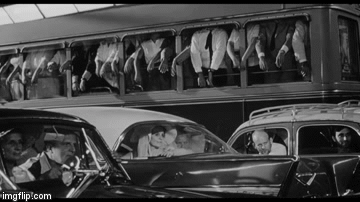
Among the plethora of mediums available to the artist, moving images have always had the privileged position of coming closest to matching the unpredictable whirring of the mind. It has perhaps become a cliché to liken the cinematic vision to the state of dreaming, yet it is a comparison which rings true. Cinema has the unique ability to dig at once into the mind of the artist, the mind of the cinematic protagonist, and the mind of the audience, creating a separate sphere wherein all three may merge.
Fellini’s Eight and a Half remains one of the purest illustrations of this artistic pursuit. The film, which flits between reality, dream, and the artist’s subconsciousness, plays out around the (pre-)production of a film, and the laborious process of creating art. As the narrative comes to a conclusion, the final sequence sees production finally begin on the film, which up to this point was destined never to be realized. However, upon reaching this moment it seems Fellini has replaced the protagonist, Guido, as the director of the film within the film, for it is at this stage that the entire cast of characters – including Guido – join hands and parade before Fellini’s camera on the film set Guido had envisioned for his own production.
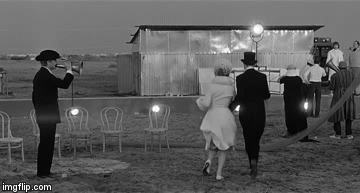
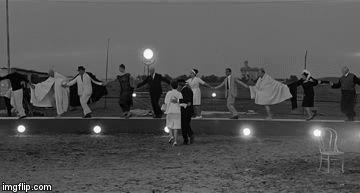
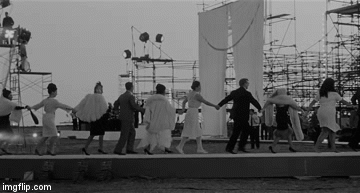
From the outset it is clear that Guido, the director struggling with the cinematic equivalent of writer’s block, plagued by visions and dreams of his life – past, present and future – is a stand-in for Fellini. As we delve deep into Guido’s psyche, it is Fellini’s mind which unfolds before us. It is impossible to distinguish whether our protagonist is the man in front of the camera or the man behind it. The late, great Roger Ebert, looking back at the film in 2000, encapsulated the limbo-esque experience presented to the audience, writing “it does what is almost impossible: Fellini is a magician who discusses, reveals, explains and deconstructs his tricks, while still fooling us with them. He claims he doesn’t know what he wants or how to achieve it, and the film proves he knows exactly, and rejoices in his knowledge”.
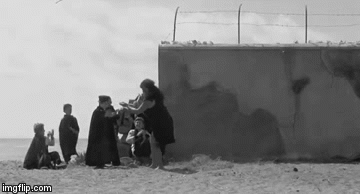
Fellini achieves this artistic ambiguity through his privileging of images over ideas. Andrei Tarkovsky, formulating his manifesto on cinema, wrote that the function of film is to “startle us with the authenticity of the actions and the beauty and depths of the artistic images – not by obtrusive illustration of their meaning”. In this school of thought the audience must work to draw ideas from a visualisation. Eight and a Half weaves together images in such a way that we are inside Guido’s mind, even while watching him dance across the screen, while simultaneously we also see Fellini and all he stands for laid out in front of our eyes, even while his body never crosses the frame.
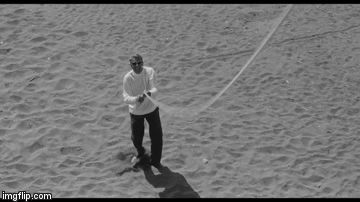
Guido remains incredibly passive throughout – events unfold around him rather than through him – yet he is the director of the film at the heart of the cinematic narrative, and the mind from which the dreams and visions spring. Though, of course, it is Fellini who directs the director and finally allows him happiness as Guido is assembled into the cast of his own film, now playing to Fellini’s camera rather than having to stand behind his own. As Guido’s writer’s block subsides, Fellini’s own writer’s block evaporates with the completion of this film, the staggering evidence of which plays out in front of the viewer.
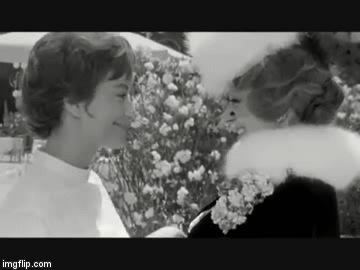
However, the true genius of Eight and a Half lies not simply in its blending of protagonist and director, but in the way the audience is invited to take up residence within the artistic mind via this path. Starting with the film’s opening, the silent escape from reality as Guido floats out of a traffic jam and into the sky, to everything that comes after, images trickle onto the screen, inviting us not simply to spectate, but rather to step into the mind of the director. In viewing the finished work the audience is the final piece of the puzzle, the culmination of Fellini’s triumph and the validation of Guido’s masterpiece. Through seeing the artistic work, we stand as a testament to the struggles of the mind that produced it.
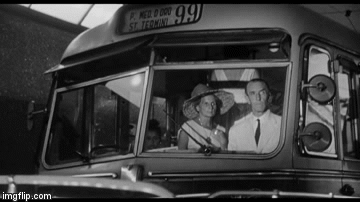
Fabian Broeker is a first-year PhD student in the Culture, Media and Creative Industries department at King’s College London. His work focuses on digital mediations of intimacy and the utilisation of film as a methodology in academic research.
